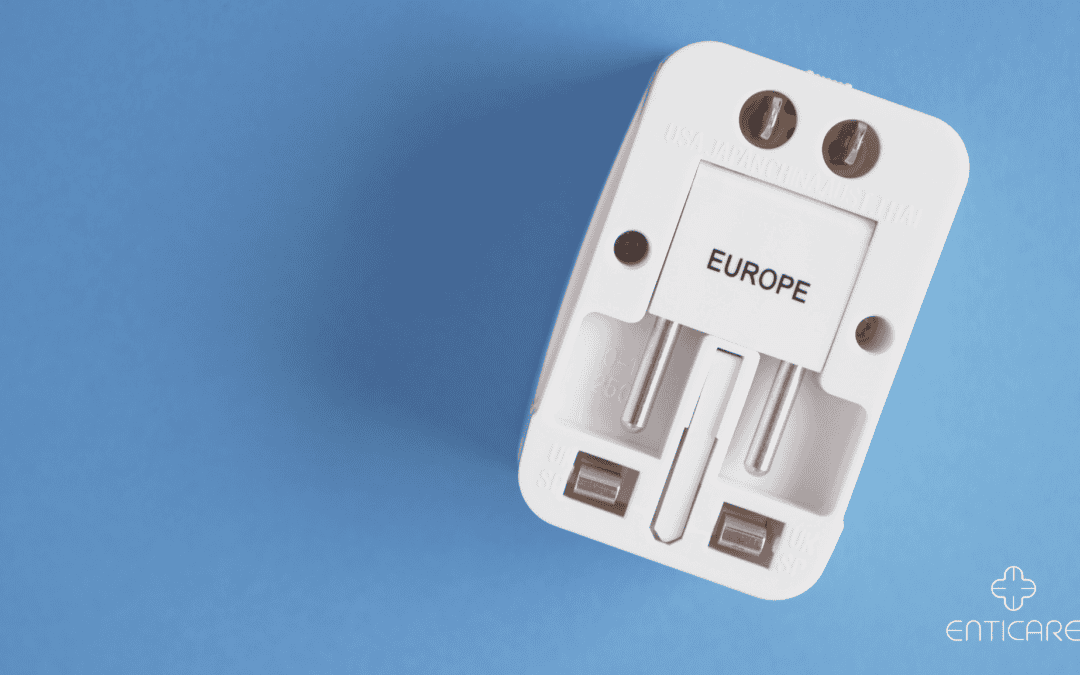Traveling with a CPAP machine can bring up a lot of questions and concerns. One common question is whether you can use your CPAP’s power cord in Europe. Understanding how to manage your CPAP and ac power cord while traveling abroad is crucial for maintaining your sleep therapy and ensuring a restful trip. This comprehensive guide will provide everything you need to know about using your CPAP in Europe, including the importance of having functioning CPAP power cords for uninterrupted sleep apnea therapy.
Attracting Attention: The Importance of Sleep Therapy Continuity
Maintaining Consistent Sleep Therapy
Travel disrupts routines, but consistent sleep therapy remains essential for individuals with sleep apnea. Discontinuing CPAP use, even temporarily, can lead to fatigue, decreased concentration, and other health issues. Ensuring your CPAP machine works abroad allows you to maintain your therapy uninterrupted. Power cords and adapters compatible with different models of CPAP and BiPAP machines, including various brands and series, are available to ensure you can use your device anywhere.
The Impact of Interrupted Therapy
Interrupted sleep therapy affects not only your health but also your enjoyment of the trip. Symptoms of untreated sleep apnea, such as daytime drowsiness and irritability, can make travel less enjoyable. Ensuring your CPAP works in Europe prevents these issues, allowing you to enjoy your travels fully.
Peace of Mind
Knowing your CPAP will function properly in Europe gives you peace of mind. Worrying about whether your device will work can add unnecessary stress to your travel plans. Understanding how to prepare your CPAP for international travel eliminates this concern, allowing you to focus on enjoying your trip.
Interest: Understanding Power Differences
Voltage Differences
Europe operates on a different voltage standard ac power out than the United States. While the U.S. uses 110-120V, Europe uses 220-240V. Many modern CPAP machines, like those from ResMed and Philips Respironics, come with universal power supplies that can handle both voltage ranges. Check your CPAP machine’s power specifications to ensure it supports 220-240V.
If you are using a BiPAP machine, it is recommended to plug it directly into a wall outlet. Avoid using an extension cord unless absolutely necessary and use a surge protector if needed.
Plug Types
Europe uses more power cords and different plug types compared to the U.S. European outlets typically require round-pronged plugs, whereas the U.S. uses flat prongs. Investing in a good quality plug adapter allows you to plug your CPAP power cord into European outlets. Adapters can be purchased at travel stores, online, or at the airport.
Frequency Differences
The frequency of electrical current also differs. The U.S. operates at 60Hz, while Europe uses 50Hz. Most CPAP machines are designed to handle this frequency difference, but it’s always good to double-check your machine’s specifications. Ensuring your machine can operate at 50Hz prevents any operational issues.
Desire: Preparing for Travel
Checking Your CPAP Machines’ Compatibility
Before traveling, check your CPAP machine’s manual or the manufacturer’s website to confirm it supports 220-240V and 50Hz. This information is usually found on the power supply brick or the device’s back. If your machine supports these specifications, you won’t need a voltage converter. Manufacturers often provide power supply and power cords that are compatible with different voltage standards.
Packing Essentials
Pack your CPAP machine in its travel case to protect it. Include the power cord, plug adapter, mask, and any other necessary accessories. Consider bringing extra supplies, such as filters and tubing, in case you need replacements. Ensure you have a copy of your prescription and a note from your doctor explaining your need for the device for smoother passage through airport security.
Backup Plan
Consider bringing a backup power solution, such as a battery pack, especially if you plan to stay in remote areas or experience frequent power outages. Some CPAP batteries and battery packs are designed for international travel and can provide power for several nights.
Action: Using Your CPAP in Europe
Setting Up
Upon arrival, find a suitable spot near a power outlet to set up your CPAP machine. Use the plug adapter to connect your power cord to the wall outlet itself. Ensure all connections are secure and the machine operates correctly before bedtime.
Monitoring Performance
Monitor your CPAP machine’s performance during the first few nights. Ensure it operates normally without any issues related to voltage or frequency. If you notice any problems, contact the manufacturer’s customer service for advice.
Maintaining Routine
Stick to your regular CPAP routine as much as possible. Travel can disrupt your schedule, but maintaining your usual sleep therapy practices helps ensure you get restful sleep. Clean your equipment regularly, just as you would at home.
Conclusion: Enjoying Your Trip with Peace of Mind
Traveling to Europe with a CPAP machine requires some preparation, but it’s entirely manageable. By understanding the power differences, packing the right accessories, and setting up your device correctly, you can ensure your sleep therapy continues without interruption. Enjoy your travels knowing your CPAP will support your health and well-being.
For personalized advice and assistance with your CPAP needs, schedule an appointment with our experts at Enticare. Our team is here to help you navigate your sleep therapy and ensure you have a restful and enjoyable trip.

